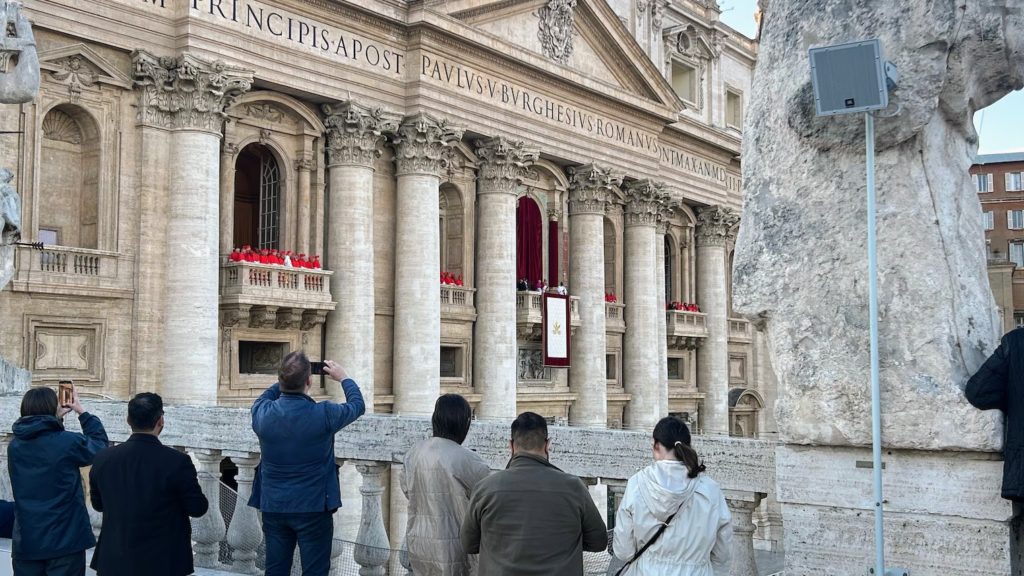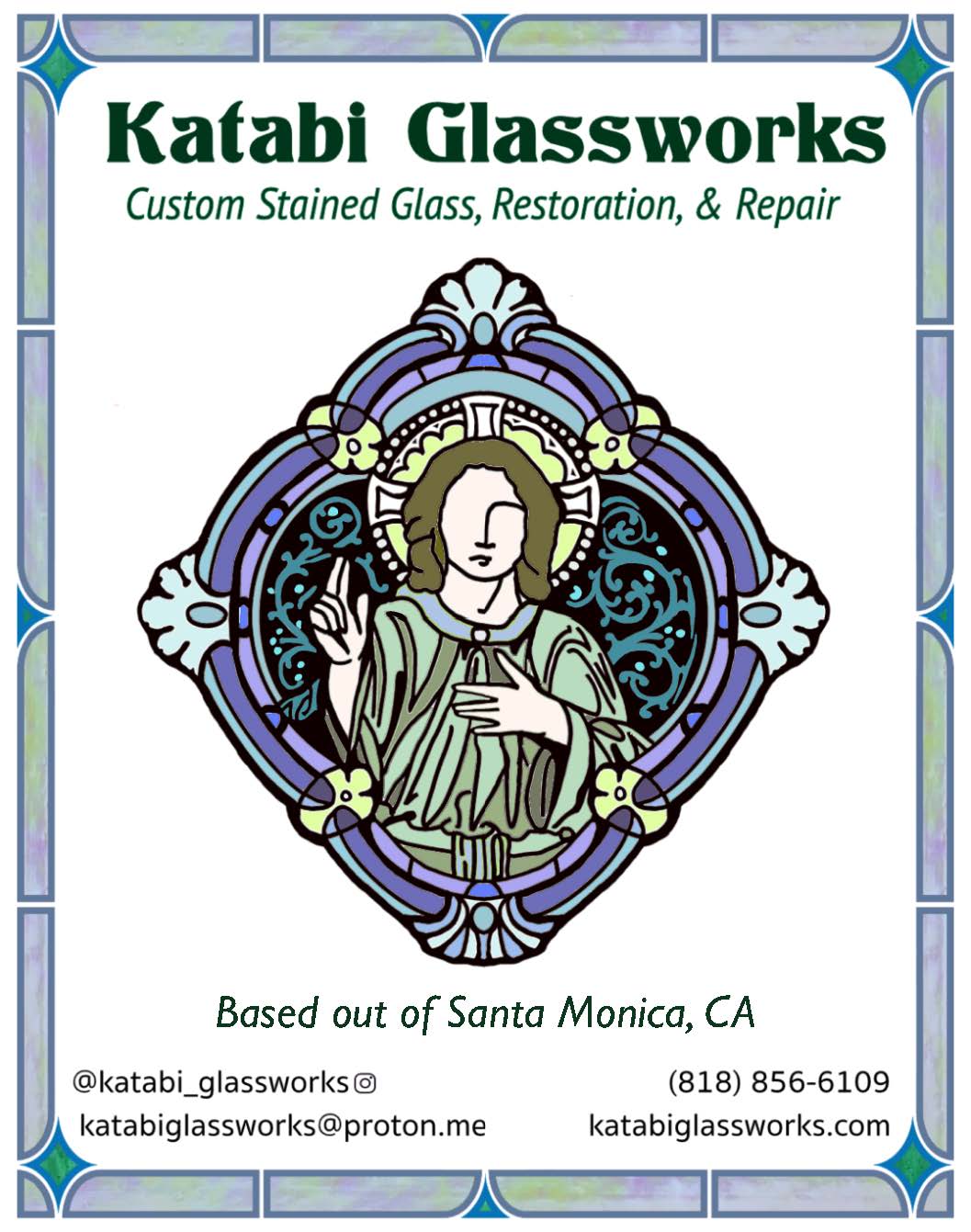After a few days in Rome covering the build-up to the conclave, I had a clear “white smoke” plan.
It went like this: I would be in St. Peter’s Square to witness the white smoke from the chimney atop the Sistine Chapel, in order to capture the crowd’s reaction. Then I could run up the stairs to the deck of the southern colonnade of St. Peter’s Square, the right “arm” of Bernini’s famous columns, where credentialed journalists are allowed to take pictures and video during major events.
But because of some irregularities in the voting schedule that day, the 6 p.m. smoke signal caught me on the deck, not in the square.
The terrace offers the closest possible view of the balcony of St. Peter’s Square from which a new pope emerges, but it doesn’t allow for a direct view of the chimney installed atop the Sistine Chapel during conclaves (or of the monitor screens in the square, for that matter).
That meant that the journalists — the people responsible for communicating the news of the year to the rest of the world — learned a new pope had been elected not because we saw the white smoke, but because the roar of the crowd in St. Peter’s Square.
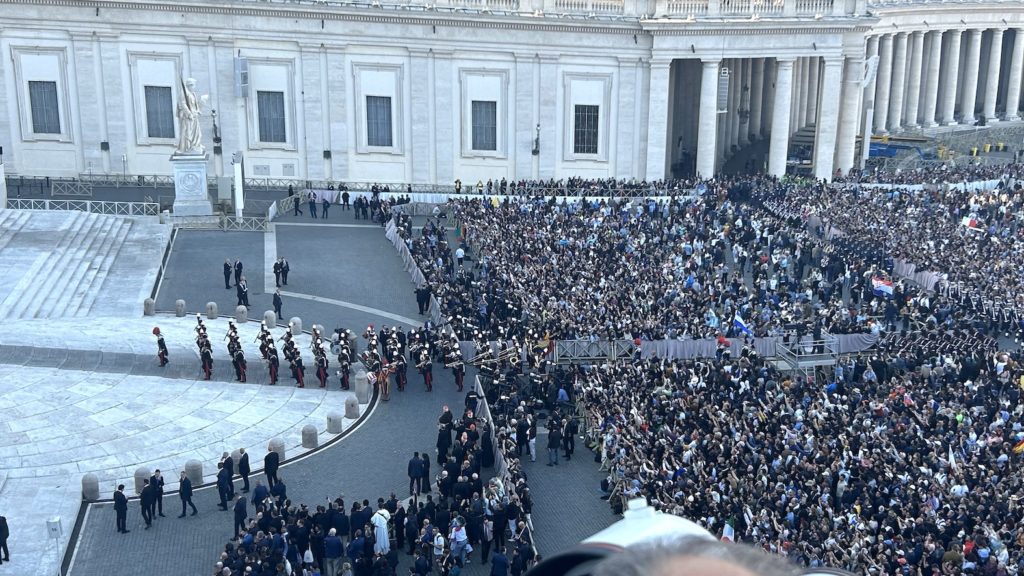
Suddenly, everyone was scrambling to get a peek of the white smoke as it rose from behind the facade of St. Peter’s. “È bianca? È bianca?” the Italians around me kept asking each other.
A few seconds later, as it began to billow out further, we could see it clearly. That smoke was totally bianca.
Then the bells began to ring. For the next hour, we waited with the rest of the world in anxious anticipation for the traditional “habemus papam” announcement that the white smoke had promised. To pass the time, the crowd broke out into occasional chants of “Olé, Olé, Olé!” and “viva el papa!” as the crowd’s energy grew. Eventually, the Swiss Guards processed into the square, led by a spectacular marching band. This was a movie.
When Cardinal Dominique Mamberti finally appeared on the balcony and began to pronounce the Latin translation of the new pope’s baptismal name, “Robertus Franciscus,” I knew. I had done enough research to know this was Cardinal Robert Prevost, the Chicago native and Augustinian missionary in Peru whom Pope Francis had trusted to lead the Dicastery of Bishops, the Vatican department helps the pope vet and select bishops around the world.
But I’m not sure I believed.
An American pope? I remembered being told as a child by my parents that an American can’t become pope. Yes, Prevost had appeared on just about every shortlist in the press in the days since Francis’ death. But deep down, I’m not sure I believed it was possible.
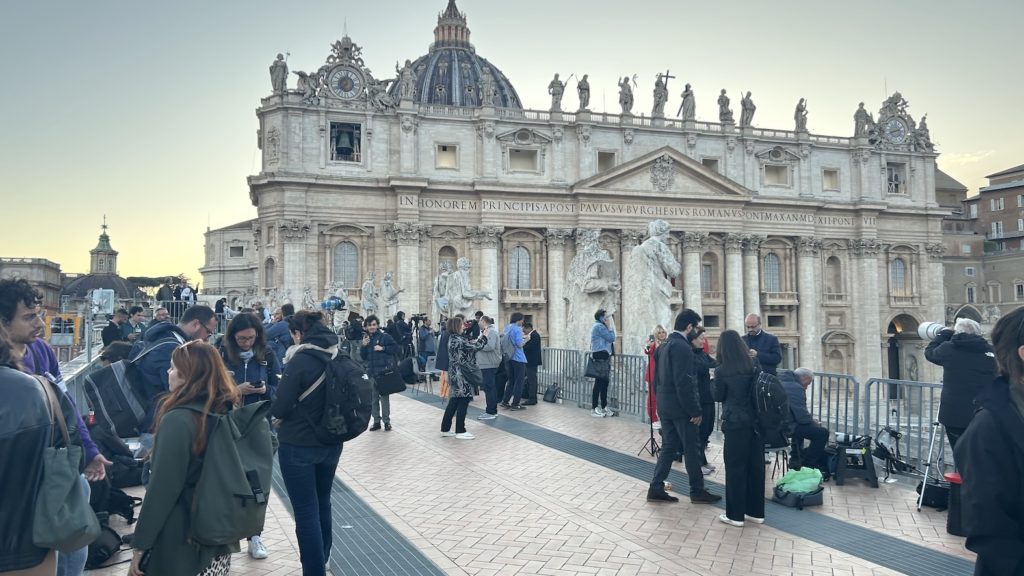
Neither, I suspect, did any of my fellow American journalists atop the colonnade that evening. For a few seconds after the name “Prevost” was pronounced, we traded looks of disbelief. The Catholic Church had an American pope. And he’d taken the name Leo XIV. This can’t be happening.
Within seconds — believe me, seconds — a brand new hybrid chant was born in St. Peter’s Square blending “olé” with “Leeoooone.” Brilliant.
Finally came the climactic moment when Leo stepped onto the balcony to greet the world for the first time. Much has already been said and written about the words he uttered. But what struck me was how long he took before saying them. It was as if he was buying every available second possible to take in the moment, to understand what the College of Cardinals — and the Holy Spirit — had just asked of him, a noticeably shy man called to serve in the most visible role on the world stage. (It wasn’t until watching TV footage later that I realized Leo appeared to cry on the balcony.)
His first words, “may peace be with you,” were certainly an acknowledgement of the lack of peace in so many parts of the world. They were also, as the pope himself said, the first words spoken by the risen Christ in the gospels, and thus especially appropriate for this season of Easter. But I’m sure they were also a direct appeal to the lack of peace in our hearts — in my heart, so often — and a subtle nod to the famous phrase attributed to St. Augustine, the patron of Leo’s religious order: “You have made us for yourself, O Lord, and our hearts are restless until they rest in You.”
Once the Holy Father had given us his apostolic blessing and retreated back into the loggia of St. Peter’s Basilica, it was time to pack up and leave. Among the members of the press, there were hugs, goodbyes, and for us Americans, heartfelt congratulations (especially from the group of Argentines next to me, whom I jokingly thanked for passing America the papal baton).
After making my way down the stairs to the base of Bernini’s columns, I had to decide what to do next. St. Peter’s Square was slowly emptying out, but I needed to look for American witnesses to interview, especially any from Southern California.
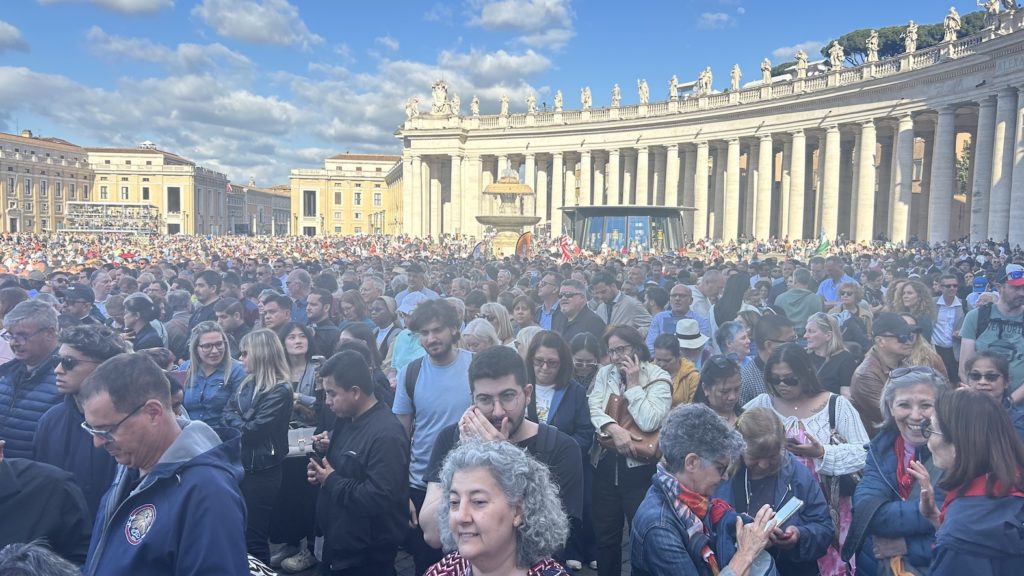
I didn’t have to look far. In fact, I didn’t have to look at all. Divine Providence literally put them in front of me. As I came out of the stairs, I saw a middle-aged Hispanic woman singing to herself between the columns in Spanish: “We have a pope, Leo XIV. We love Leo!”
I walked over and rudely interrupted her. “Do you speak Spanish? Yes? Oh great. English? Of course. Wait, where are you from?”
I couldn’t believe my luck. I’d run into a group of four friends — all from Southern California — on a “girls’ trip” to Italy to celebrate one of their birthdays. Two of them had recently moved to Texas, but the other two still lived in San Bernardino County. What were the chances?
Sitting down on the base of one of the columns, I took my phone out and interviewed each of them. I’m still in awe of the story of their white smoke adventure. (You will be, too, once I publish my story about them).
The rest of my evening was spent trying to keep up with the aftermath of a papal election: returning phone calls, sending messages, charging my devices, a few more interviews, and trying to metabolize the biggest news story of my life. I’m not sure how long that will take.
But in case you were wondering: Yes, I believe.
